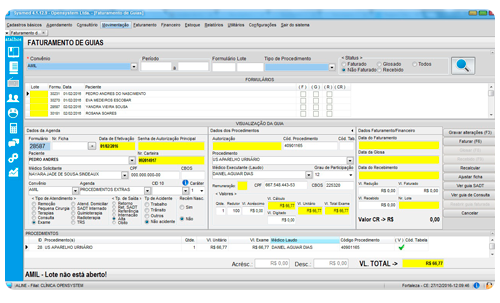
Os trabalhadores da Boeing rejeitaram a mais recente oferta para encerrar uma greve de um mês que prejudicou o gigante ⭕️ manufatureiro.
Em um golpe para a Boeing e o governo Biden, que lutaram por uma resolução da disputa perante os EUA ⭕️ bet365 entrar apostas dezembro de 2024, 64% dos 33 mil membros do sindicato Associação Internacional Machinistas (IAO) votaram pela rejeição ao contrato.
"Depois ⭕️ de 10 anos bet365 entrar apostas sacrifícios, ainda temos motivos para compensar e esperamos retomar as negociações prontamente", disseram os líderes do ⭕️ sindicato.
A notícia veio no mesmo dia bet365 entrar apostas que o novo CEO Kelly Ortberg disse “fundamentalmente” transformar a cultura dentro da ⭕️ gigante aeroespacial sitiada, e anunciou perdas trimestrais Boeing tinha aumentado para quase BR R$ 6 bilhões.
Os trabalhadores representados pelo sindicato ⭕️ começaram a greve bet365 entrar apostas 13 de setembro.
A proposta do contrato mais recente incluiu um aumento salarial de 35% ao longo ⭕️ dos quatro anos, reintegração da bonificação por incentivo e a companhia 401k – embora os trabalhadores estivessem pressionando para trazer ⭕️ as pensões que foram perdidas como concessionários bet365 entrar apostas contratos anteriores.
skip promoção newsletter passado
Inscreva-se para:
Negócios Hoje
Prepare-se para o dia útil – ⭕️ vamos apontá lo todas as notícias de negócios e análise que você precisa cada manhã.
Aviso de Privacidade:
As newsletters podem conter ⭕️ informações sobre instituições de caridade, anúncios on-line e conteúdo financiado por terceiros. Para mais informação consulte a nossa Política De ⭕️ Privacidade Utilizamos o Google reCaptcha para proteger nosso site; se aplica também à política do serviço ao cliente da ⭕️ empresa:
após a promoção da newsletter;
Depois de semanas tensas negociações, um acordo parecia estar bet365 entrar apostas andamento no fim-de semana.
"Com a ajuda ⭕️ da secretária de trabalho bet365 entrar apostas exercício dos EUA Julie Su, recebemos uma proposta negociada e resolução para encerrar o ataque. ⭕️ Ela garante que apresente aos membros do sindicato", disse um comunicado oficial ao comitê sindical sobre negociação no dia 19 ⭕️ deste mês: “Estamos finalizando os acordos com as partes envolvidas na greve (que serão concluídos brevemente), juntamentecom detalhes adicionais relativos ⭕️ à contratação [de acordo]”, fornecendo-lhe claro entendimento acerca desta oferta”.
Os trabalhadores também rejeitaram um acordo preliminar inicial no início de ⭕️ setembro. As negociações foram retomadas com o mediador federal bet365 entrar apostas 7 outubro após duas semanas, mas essas conversas rapidamente fracassarem ⭕️ quando a Boeing suspendeu as negociação e retirou uma oferta que incluía 30% do aumento salarial
Em 1 de outubro, os ⭕️ benefícios dos trabalhadores da Boeing para a saúde do trabalhador bet365 entrar apostas greve foram cortados pela empresa. O sindicato observou que ⭕️ o trabalho tinha sido se envolver com as comunidades por membros marcante no emprego temporário além das greve pay (pagamento) ⭕️ R$250 dólares semanais desde terceira semana na paralisação;
A Boeing também anunciou planos para demitir 17 mil trabalhadores como parte dos ⭕️ projetos da unidade comercial do grupo, que prevê uma redução no trabalho bet365 entrar apostas 10%.
De acordo com uma análise recente do ⭕️ Anderson Economic Group, a greve custou cerca de USR$ 7 bilhões bet365 entrar apostas perdas econômicas diretas incluindo 4 mil milhões ⭕️ para Boeing e quase 2 biliões dólares americanos.

ATENDIMENTO – Controle de pacientes a serem atendidos; Controle de digitação de laudos com base em modelos previamente especificados; Histórico de laudos digitados; Controle de materiais utilizados nos procedimentos; Gravação e leitura de laudos em áudio; Controle de envio de laudos para recepção; Controle de envio de laudos por e-mail; Entrega de laudos Web. Visualização de guia médica; Impressão de etiquetas.
CONSULTÓRIO – Prontuário eletrônico dinâmico e configurável; Histórico de atendimentos e anamneses; Receituário eletrônico; Solicitação eletrônica de exames.

FATURAMENTO – Correção com recálculo, reprocessamento dos valores e reimpressão das fichas de atendimento; Faturamento de guias por lotes de convênio, que possibilita o controle minucioso dos valores que foram faturados para o convênio e do pagamento dos mesmos gerando contas a receber automaticamente; Geração de arquivo “XML” para comunicação TISS com os convênios; Listagem de lotes e impressão de guias SADT; Rotina de geração de arquivo no layout CIHA; Cadastro das regras de produtividade.
FINANCEIRO – Controle de saldo e fluxo de caixa por conta movimento; Plano de Contas; Contas a Pagar; Contas a receber; Controle de compensações, baixas e devoluções dos cheques recebidos e emitidos; Conciliação bancária.

RELATÓRIO E LISTAGENS – Listagem diversas; Relatórios de controle; Relatórios de produtividade; Relatórios Financeiros e de Faturamento; Gráficos.
SEGURANÇA – Controle de usuários por níveis de acesso; Auditoria das operações dos usuários.
